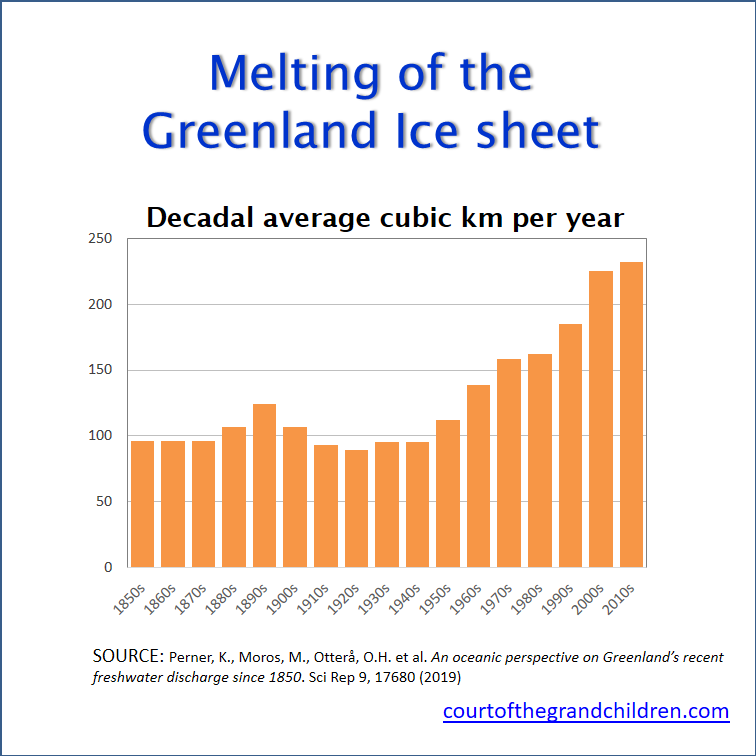The Greenland Ice Sheet covers more than 80% of Greenland’s land area and is more than three kilometres deep at its thickest point. If it were to fully melt, the sea level would rise by over 7 meters (23 feet). To fully melt will take a long time. We are talking centuries.
But individual glaciers have a big impact and much quicker. Scientists have called attention to the rapid decay of the enormous marine-terminating glacier in northeast Greenland called Zachariae Isstrom, which holds ice equivalent to half a meter of sea-level rise on its own. And there are others.
As Climate Scientist, Eric Rignot has said “We are teasing a giant here.” Rignot and NASA are in the midst of a broad, five-year investigative mission provocatively (appropriately?) called ‘‘Oceans Melting Greenland’’ or OMG.

And from a recent paper in Nature’s Scientific Reports, we extracted the data shown in this chart. The average seasonal melt from the Greenland Ice Sheet since the 1950s has more than doubled, and the trend is self-evident.
When we look at this chart, we ask ourselves, “Can this be reversed?” We think we know the answer, whereupon the next question is “What are we going to do about it?”
Photo credit: John Sonntag/NASA
